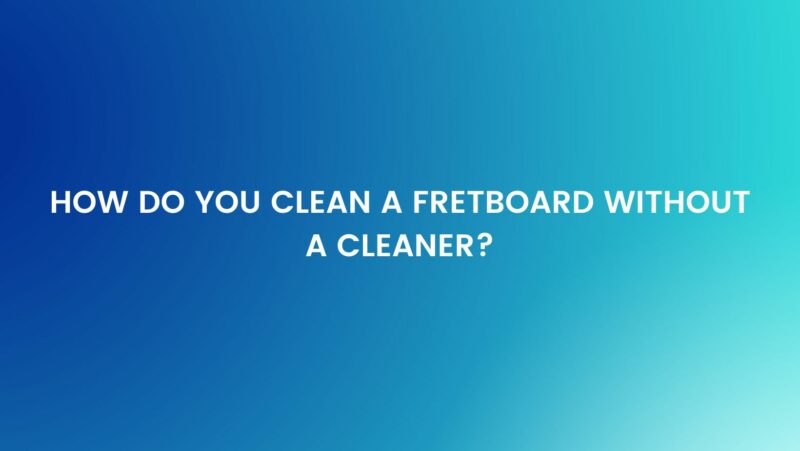Cleaning your guitar’s fretboard is a crucial part of guitar maintenance, as it helps maintain the playability and longevity of your instrument. While there are many commercial fretboard cleaners available, you can effectively clean your fretboard using readily available household items and simple techniques. In this comprehensive guide, we’ll explore how to clean a guitar fretboard without a specialized cleaner, saving you money and ensuring your fretboard remains in excellent condition.
Important Note: Before cleaning your fretboard without a specialized cleaner, be sure to consider the type of wood your fretboard is made of and whether it has any specific finish or treatment. Different woods and finishes may require slightly different care methods.
Materials You’ll Need
Before getting started, gather the following materials:
- Soft lint-free cloths
- Warm water
- Mild dish soap (optional)
- Toothbrush with soft bristles
- White vinegar (optional)
- Lemon juice (optional)
- Baking soda (optional)
- Rubbing alcohol (isopropyl alcohol) (optional)
Step-by-Step Guide
Follow these steps to clean your guitar’s fretboard without a specialized cleaner:
- Prepare Your Workspace: Find a clean and clutter-free workspace to work on your guitar. Ensure your guitar is properly supported and secure to prevent any damage.
- Remove the Strings (optional): Although not necessary, removing the strings can make the cleaning process easier by providing better access to the fretboard. If you choose to remove the strings, be careful not to scratch the guitar’s body during this process.
- Dust and Debris Removal: Start by using a soft, dry cloth or a toothbrush with soft bristles to gently remove loose dust and debris from the fretboard. Be gentle to avoid scratching the fretboard’s surface.
- Cleaning with Warm Water: Dampen a soft cloth with warm water and gently wipe down the fretboard. If there’s stubborn grime or buildup, you can add a drop of mild dish soap to the water. Ensure the cloth is only slightly damp, not wet, to prevent excessive moisture contact with the wood.
- Scrubbing Fretwire: Use the toothbrush with soft bristles to gently scrub along the fretwire, where dirt and sweat often accumulate. This will help remove any residue that has built up over time.
- Stubborn Stains or Grime (Optional): For particularly stubborn stains or grime, you can use a mixture of white vinegar and water or a paste made from lemon juice and baking soda. Apply either of these solutions sparingly to a cloth and gently rub the affected area. Be cautious not to scrub too hard, especially on sensitive wood fretboards.
- Tape Residue (Optional): If you have adhesive residue from tape or stickers, you can use a small amount of rubbing alcohol (isopropyl alcohol) on a cloth to gently remove it. Ensure you rinse the fretboard with warm water afterward and dry it thoroughly.
- Drying the Fretboard: After cleaning, use a dry cloth to wipe down the fretboard and remove any remaining moisture. Make sure it’s completely dry before proceeding.
- Restringing (if necessary): If you removed the strings, restring your guitar following proper stringing techniques.
Conclusion
Cleaning your guitar fretboard without a specialized cleaner is not only cost-effective but also entirely possible using common household items and gentle cleaning methods. By following the steps outlined in this guide, you can effectively clean your fretboard, removing dirt, grime, and stains while preserving the integrity of the wood. Regular maintenance like this will keep your guitar playing beautifully for years to come. Always remember to consult your guitar’s manufacturer guidelines for care and maintenance, especially if you have an exotic or sensitive wood fretboard.


